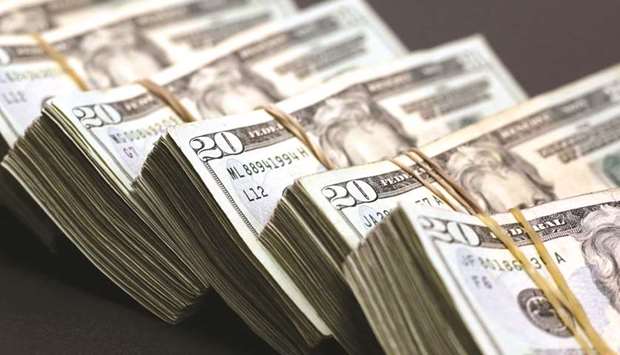A familiar theme is percolating through currency markets: The dollar’s going to weaken next year.
That idea got a boost as the Bloomberg Dollar Spot Index fell 0.7% Thursday after a dovish signal from the Federal Reserve rocked currency markets.
But faith in the US economy and the very fact that so many people expect the dollar to go down are enough to persuade others to bet on greenback appreciation.
“If you look at outlooks published by the sell-side, I think that 80-85%% of what I read is looking for a weaker dollar,” said Ed al-Hussainy, currency strategist at Columbia Threadneedle Investments. “And in my experience, when all the forecasts are looking the same way, the currency generally doesn’t behave the way these forecasts predict it will.”
The narrative for dollar bears is roughly as follows: The US can’t keep up its better-than-everyone-else economic performance. America’s growth rate will get closer to the rest of the world, the Fed will stop or slow interest-rate hikes and the advantage an investor gets from holding dollars will diminish.
However, this story of global growth convergence may sound familiar to those who have seen it trip up forecasters before. Around this time last year, the prevailing view was bearish on the dollar for similar reasons, and the median forecaster in a Bloomberg survey thought the greenback would slide to $1.21 against the euro from $1.18, the spot price at the time. Instead, the dollar has rallied to about $1.1444.
The Bloomberg Dollar Spot Index had a year-to-date gain of 3.5% after it weakened 0.7% on the day on Thursday. The greenback recouped some of its losses to trade 0.1% higher in Asia on Friday.
Coming off of a year where the contrarians won out on the dollar, some strategists are emboldened to brush off the consensus. They say the dollar could continue its rally into 2019 - and some indicators suggest the market may agree with them.
Columbia Threadneedle’s al-Hussainy says that forecasters are getting too caught up in growth stories and the Fed outlook, while ignoring the simple fact that holding US dollars can earn an investor more than most major currencies via higher interest rates. Even if the Fed slows its rate hikes, the interest-rate advantage of the greenback is still a strong positive, al-Hussainy says.
While the 2019 outlook for the Fed is blurry – some forecasters expect it’ll hike interest rates a couple of times, some say it won’t hike at all – it still contrasts with the solidly dovish outlooks for most of the world’s central banks. It’s hard to see the interest-rate gap between the US and the rest of the world closing, according to Daragh Maher, US head of FX strategy at HSBC.
Though a lot of forecasters are predicting dollar weakness next year, the market by some measures actually appears to be on the other side.
The most crowded trade on Wall Street is long the US dollar, according to a Bank of America survey, with that view cited by a quarter of fund managers who responded. Commodity Futures Trading Commission data also show that long dollar positions are near a two-year high.

Though a lot of forecasters are predicting dollar weakness next year, the market by some measures actually appears to be on the other side


